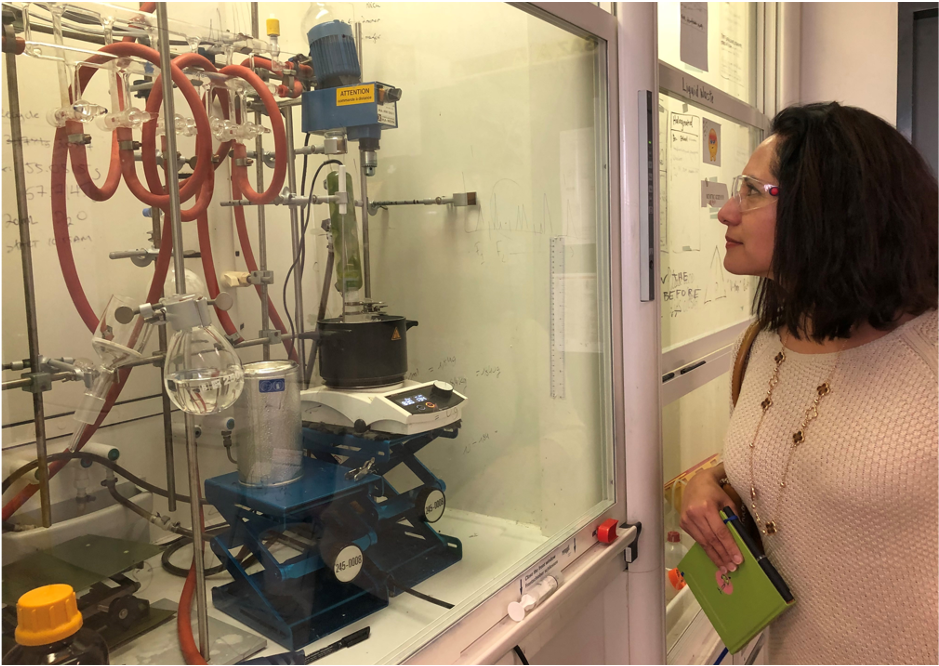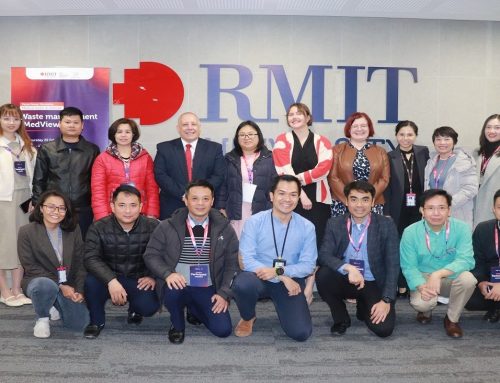28.7.2021
By Charlotte Girardin
The HUMLOG Institute’s Board Award Master’s Theses winner 2021
I’m Charlotte Girardin, a recent M.Sc. graduate from ETH Zurich with a background in mechanical engineering and a specialization in supply chain management and operations research. During my studies I learned a lot about improvement and innovation techniques, such as the Lean methodology, in a commercial industrial context. But I wondered if and how these techniques are best applied to improve the effectiveness and efficiency of operations in a humanitarian context. I was particularly keen to understand this in the context of NGOs and their supply chains, as data show that humanitarian organizations spend a consistent amount of their budgets for logistics and supply chain-related activities. Therefore, improving and innovating humanitarian operations have a crucial role in reducing the global aid gap caused by the dramatically increasing need for more aid (partly driven by climate change) and tightened funding from donors as they have conflicting priorities, and the aftermath of COVID-19 will not make that better. In other words, NGOs must make ends meet with fewer resources. For that reason, I evaluated the promotion of innovation in NGOs. I present some of the key takeaways from my thesis below.
My master thesis, which is conducted in close collaboration with Medair – a humanitarian organization inspired by Christian faith to relieve human suffering in some of the world’s most remote and devastated places-, focuses on reducing the resource gap by improving the efficiency and effectiveness of how aid is delivered by NGOs through increased innovation. We used surveys and interviews of participating NGOs to gather insights into the current situation and on what is required to be successful. This research investigates quantitatively and qualitatively how aid organizations are promoting innovation. Using a statistical analysis of the empirical data, this study established causal models for the promotion of innovation. Based on these causal models, this study makes recommendations for how NGOs can promote innovation sustainably and effectively.
The study distinguishes between two types of innovation: Incremental Innovation or Continuous Improvement (“CI”), and Radical Innovation (“RI”). CI is about continuously looking for better ways to perform an existing task or process. For example, Lean and Six Sigma are widely used methods for continuous improvement. RI is about finding significantly new ways to do things or discovering new things to do. For example, applying a new technology that can lead to fundamental changes. The results indicate that currently the CI and RI initiatives of the surveyed NGOs have a limited impact on the performance of their organization.
A CI example in the context of NGOs is shown in the figure left, where tire pressure for each vehicle is printed on each wheel arch. This way, the drivers and mechanics easily know the correct pressure to be applied, which saves time and ensures it works properly. A RI example is illustrated in the figure right, an innovation pilot of Medair-EPFL to make sustainable tarpaulins for emergency shelters from biomass waste. Due to this disruptive innovation, tarpaulins can be sourced with local biomass, saving a lot of time and money by limiting the need for (international) transportation.
The causal models show there are many opportunities for NGOs to promote CI and RI more effectively and to achieve more with fewer resources. However, innovation is not a natural thing to do for NGOs. The structure of NGOs who tend to be very decentralized around specific programs and the focus of donors to tie their funding to very specific projects make it difficult to structurally innovate. Therefore, it is essential to approach innovation differently. There are three key areas for significant improvement.
1. Formalized knowledge sharing. Both for CI and RI, the survey and interview study show that currently a vast amount of experience gathered across the world is not shared explicitly. There is too much reinventing the wheel for each new project, and the situation is exacerbated by the fact that there is high people turnover. There is a clear need for more formalized processes to share knowledge and to train people on existing and new techniques and work methods. Many people involved in humanitarian and development aid are very motivated and highly skilled in their particular field. However, they have not been trained in driving and applying innovation. A well-structured knowledge sharing approach will help NGO employees to benefit from the innovation others have done and will support and facilitate effective CI and RI developments. The survey findings in particular highlight the benefit of embedding CI and IR in NGO’s strategy as well as systematically generating, evaluating and benchmarking ideas to improve their supply chains by collaborating more closely within the organization.
2. Innovation Champions. Without a clear force to lead and support innovation, the chances of progress are slim. Appointing a formal champion for a CI and RI initiative is one of the key influencing factors for NGOs to stimulate innovation across the organization. It was observed that CI and RI initiatives with a dedicated leader to put in place activities and tools to support employees to innovate and improve had a much bigger likelihood of success than those which did not. For example, training employees on Lean methods and tools and providing them with practical support when using the Lean tools made a big difference to the effective deployment of CI. These champions bring experience, techniques and focus to the people on the front line to innovate and become more productive.
3. Innovation culture. The correlation analysis shows that promoting CI and RI only works if it is part of the organization-wide culture and mindset. The NGO leadership has to fully endorse and support the application of CI and RI and lead by example. Innovation in an NGO should not only be judged by the intensity of its efforts, but also by how well it uses and drives innovation. Working harder is not enough; one must also work smarter. Recognition of the right behavior creates visibility and has proven to be essential to embed CI and RI in the NGO’s culture.
In conclusion, the structure of NGOs and the tendency of donors to tie their funding to specific projects is not conducive to innovation. To innovate (both incremental and radical) and thereby achieve improvements in their supply chain, a structural approach to innovation and a supportive culture are necessary. This research provides concrete actions that will allow NGOs to reduce the humanitarian funding gap through innovation.
I am very honored that this thesis is selected by the Hanken School of Economics as the best master thesis in Humanitarian Logistics of the year by receiving the “HUMLOG Board Award Winner 2021”. This was an extremely pleasant surprise and couldn’t have been possible without the great support from my supervisors: Prof. Dr. Stephan Wagner, Dr. Bublu Thakur-Weigold Sarbani and Dr. Andrew Parris as well as the wider support from Medair and the HumOSCM lab.






